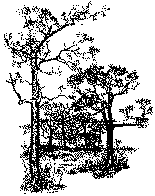 |
 |
1995 Midwest Oak Savanna and Woodland Ecosystems Conferences
Appendix E
Research questions and topics compiled and ranked by the Research Working
Group of the Midwest Environmental Roundtable's Interagency Cooperation on
Ecosystem Management as described in Botts et al. (1994, pp. 37-41). |
 |
- List high quality sites.
- Creation of insect species lists.
- Concentrate on species for whom system recovery should make a
difference. What plants and animals would be most significantly
impacted by a recovery plan (savanna-specific species). How to get
a handle/focus on which species will be most affected? Positive
vs. adverse impacts. What species are out there that we don't even
know about. Role of Heritage Programs.
- How does the distribution of herbaceous species relate to
canopy closure?
- Effects of management on insects.
- Species response to different fire regimes (invertebrates).
- What are the light requirements of flora and fauna?
- How are the edaphic, fire, and successional gradients related
tot he distribution of community types and species?
- Effect of reintroduction of fire to savanna communities. There
is little information on the effect of flora and fauna. There
needs to be long-term studies and permanent study plots.
- How important are the impacts of herbivores on savanna
stability and structure (large grazing mammals as well as birds
and insects)?
- Topography gives variability. Role in types of species and
quality of plants, sunlight, water table, soil formation,
temperature and fire history.
- How much and how fast do communities change relative to
climatic shifts and succession after fire? What factors are
related to community stability?
- Standard classification system. Add soil moisture and
chemistry.
- Determine whether different management approaches to restring
and maintaining savanna influence the diversity of species at a
site? Stated differently, do some management regimes favor some
types or guilds of species over others? Can biodiversity be
maximized?
- What are the effects of non-oak trees in an oak savanna?
- What is the difference between a woodland and a savanna?
- What changes in species composition occur across the savanna
portion of the vegetation continuum?
- Research the wetland/prairie/savanna interface and
savanna/woodland interface, then integrate lists (plants and
animals). From these lists create indicator and dominant species
lists.
- Research both natural and human disturbance on savannas.
- What was the role of native Americans with respect to
savannas?
- What geographic areas are oak savannas. Circulate lists/maps
for comment and consolidation. Store in database, develop
indicator species and structures.
- Correlation between canopy and basal classification.
- Identify which species are dependent on metapopulation
dynamics for their persistence, thus requiring large preserves for
viable populations.
- What are the landscape scale relationships between species and
communities? How much of the diversity is related to the mosaic of
communities? What are the optimal mixes of community types and
conditions for critical species?
- What features distinguish oak savanna ecosystems (soil
characteristics, hydrology, sun/shade patterns, topography,
animals, geologic history, land use.
- What are the dynamic characteristics of oak savanna
ecosystems?
- What are the habitat requirements of the rare species found in
savannas? Do some require both open and savanna habitat for
persistence? What are the distributions and dynamics of rare
species along various environmental gradients (light, soil, fire,
hydrology, litter)?
- Animal/plant reintroduction experiments are needed.
- Dominance of root systems.
- What were the mycorrhizal, and fungal relationships in oak
savannas?
- Role of shrubs in savanna.
- What is the effect of natural tree mortality, such as from oak
decline, and two-lined chestnut borer epidemics, on maintenance of
understory species? (Gypsy moth?)
- How do effects of severe droughts resemble and differ from
fire effects? Were cyclic climatic shifts important in maintaining
species associated with savannas? To what extent were savannas
refugia for survival of prairie, wetland, and woodland species
impacted by climatic shifts?
- How large an area is needed to support viable populations of
different species?
- What is required to create effective migration and dispersal
corridors between reserves? For which type of organisms must the
corridors be their optimal habitat. Research the relevance of
dispersal for rare species to identify barriers to dispersal.
- What habitats are needed by animals during restoration? What
should be introduced or reintroduced?
- Does animal use differ between high-quality natural sites and
restored sites?
- Regional perspective on patterns of savanna distribution;
dominant plant members and possible indicator species or
ecological groups; use aerial photographs and land surveys.
- Can land management techniques be developed that will allow
sustainable use of savanna/woodland resources and protect rare and
endangered species?
- Determine the range of morphological and genetic variability
within species across geographic and ecological gradients where
relevant. This is relevant to determining population protection
priorities.
- Are different definitions in different states the result of
geographic variation of the ecosystem?
- Can polenology provide additional information on the
presettlement composition of oak savannas and the changes that
were associated with climatic shifts?
- How have oak savannas changed through time?
|

